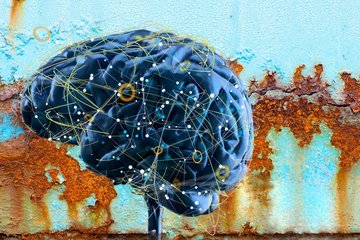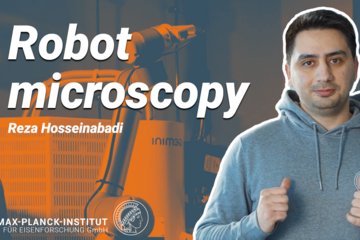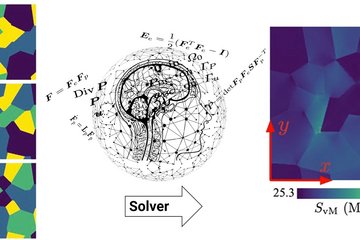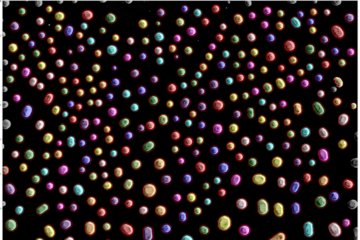All genres
1681.
Talk
A modular crystal plasticity framework applicable from component to single grain scale. THERMEC 2011, Québec City, QC, Canada (2011)
1682.
Talk
Particle-resolved simulation of blood in simple shear flow: Shear-thinning behavior and its microscopic origin(s). Institut für Festkörperforschung, FZ Jülich, Jülich, Germany (2011)
1683.
Talk
Characterization of CI(G)S thin-film solar cells using atom probe tomography. 37th IEEE Photovoltaic Specialists Conference (PVSC), Seattle, WA, USA (2011)
1684.
Talk
Effect of strain path and texture on microstructure in Fe–22 wt.% Mn–0.6 wt.% C TWIP steel. 1st International Conference on High Manganese Steels 2011, Seoul, South Korea (2011)
1685.
Talk
A dislocation density-based constitutive model for TWIP steels. 1st International Conference on High Manganese Steels, Seoul, South Korea (2011)
1686.
Talk
Structure and function of the biological photonic crystals in the scales of a beetle. European Materials Research Society E-MRS Spring Meeting 2011, May 2011, Nice, France (2011)
1687.
Talk
Study of iron EAM potentials and their effects on dislocation dynamic. E-MRS Spring Meeting, Nice, France (2011)
1688.
Talk
Alloy design of nanoprecipitate-hardened high-Mn maraging-TRIP and -TWIP steels. 1st International Conference on High Manganese Steels 2011, Seoul, South Korea (2011)
1689.
Talk
Atomistic understanding of hundred-thousand tons. Bernkastel-Kues Workshop on Possibilities and Limitations of Quantitative Materials Modeling and Characterization, Bernkastel-Kues, Germany (2011)
1690.
Talk
Designing structural metallic materials by combining ab-initio models, atomic scale characterization, and synthesis. Colloquium Lecture, Physics Department University Mainz, Mainz, Germany (2011)
1691.
Talk
Computational Crystal Plasticity. Korea Institute of Science and Technology (KIST), Seoul, South Korea (2011)
1692.
Talk
Deformation induced dislocation interactions near martensite-ferrite phase boundaries. MRS Fall Meeting 2011, San Francisco, CA, USA (2011)
1693.
Talk
Advanced Tomographic Tools for Reconstruction and Analysis of 3D-EBSD Datasets. RMS Electron Back Scatter Diffraction Conference 2011, Düsseldorf, Germany (2011)
1694.
Talk
Eine modulare Kristallplastizitäts Implementierung für Anwendungen vom Einkristall bis zum Bauteil. 14. Workshop Simulation in der Umformtechnik, Dortmund, Germany (2011)
1695.
Talk
Combining characterization and simulation of grain-scale plasticity in three dimensions. EBSD Conference 2011 of the Royal Microscopical Society, Düsseldorf, Germany (2011)
1696.
Talk
Enhancing mechanical properties of calcite by Mg substitutions - An ab initio study. American Physical Society - March Meeting, Dallas, TX, USA (2011)
1697.
Talk
Mechanical Design Principles of Crustacean Cuticle evaluated experimentally and by Ab initio-based Multiscale Simulations. Institute Colloquium, Institut de Mécanique des Fluides et des Solides, CNRS, Strasbourg, France (2011)
1698.
Talk
A modular crystal plasticity framework applicable from component to single grain scale. IUTAM Symposium Linking Scales in Computations: From Microstructure to Macro-scale Properties, Pensacola, FL, USA (2011)
1699.
Talk
Deformation-induced geometrically necessary dislocation evolution in dual-phase steel. 20th EBSD Conference, Düsseldorf, Germany (2011)
1700.
Talk
How to capture mesoscale plastic strain gradient effects in a physical way -- a look at dislocation mechanics and computational aspects. MST Symposium, Los Alamos National Laboratory, Los Alamos, NM, USA (2011)











